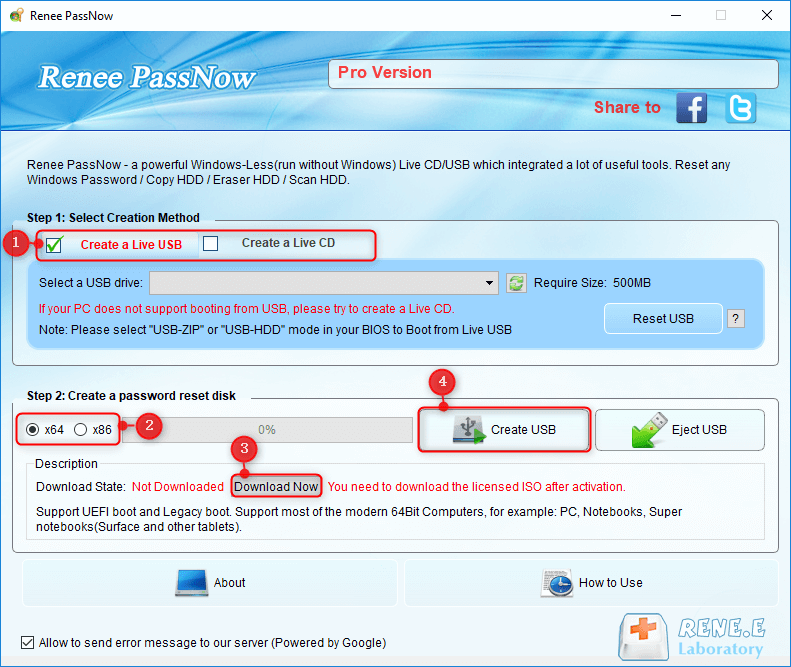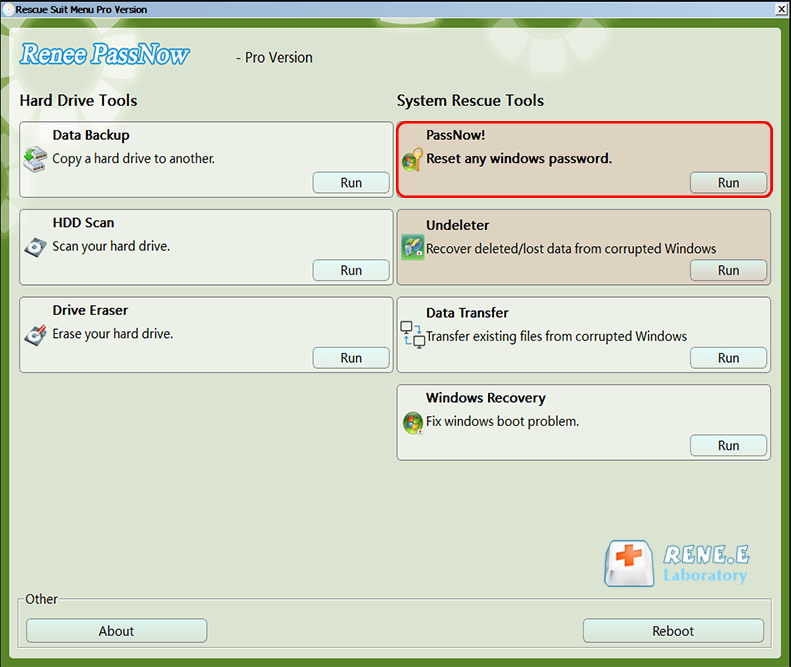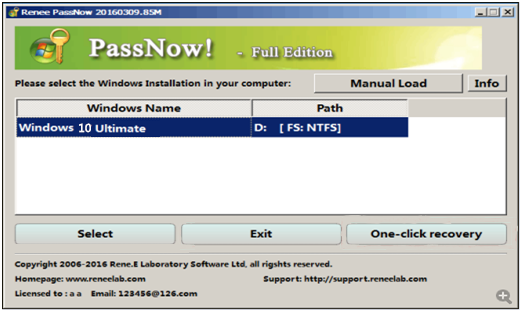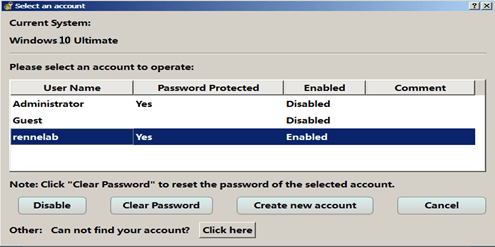Resetting a Lenovo Password with a USB Stick: Exploring Your Options
- Home
- Support
- Tips System Rescue
- Resetting a Lenovo Password with a USB Stick: Exploring Your Options
Summary
Discover the best methods for resetting your Lenovo password with a USB stick. From built-in options to third-party tools, we explore everything you need to know to unlock your laptop. Don't let a forgotten password hold you back - read on to learn how to create and use a Lenovo password reset USB stick.
Start by downloading Renee PassNow from the official website and install it on a different computer that you can access. You can choose the appropriate version based on your computer’s operating system.

Remove Windows Login Password 3 steps for whole password remove process.
Recover the files Recover the deleted files without Windows system.
Transfer the data Transfer the important files of the computer with system.
Fix Windows startup error Fix various Windows startup failures or crashes.
Erase disk Completely erase disk files which will not be restored.
Remove Windows Login Password 3 steps for whole password remove process.
Recover the files Recover the deleted files without Windows system.
Transfer the data Transfer the important files of the computer with system.
Launch Renee PassNow and insert a USB flash drive or blank CD/DVD into the computer. Select the option to create a bootable media. Follow the on-screen instructions to complete the process.

Insert the bootable USB or CD/DVD into the locked Windows computer. Restart the computer and enter the BIOS settings by pressing the appropriate key (usually F2 or Delete). Configure the boot order to prioritize the bootable media.
| Server Type | Enter boot menu method |
|---|---|
| DELL | Press the F12 key repeatedly before the Dell logo appears on the screen. |
| HP | Press the F9 key multiple times when the HP logo is displayed. |
| BIOS Name | Enter boot menu method |
|---|---|
| ASRock | DEL or F2 |
| ASUS | DEL or F2 for PCs/ DEL or F2 for Motherboards |
| Acer | DEL or F2 |
| Dell | F12 or F2 |
| ECS | DEL |
| Gigabyte / Aorus | DEL or F2 |
| Lenovo (Consumer Laptops) | F2 or Fn + F2 |
| Lenovo (Desktops) | F1 |
| Lenovo (ThinkPads) | Enter then F1 |
| MSI | DEL |
| Microsoft Surface Tablets | Press and hold Power and Volume Up buttons |
| Origin PC | F2 |
| Samsung | F2 |
| Toshiba | F2 |
| Zotac | DEL |
| HP | Esc/ F9 for `Boot Menu`/ Esc/ F10/ Storage tab/ Boot Order/ Legacy Boot Sources |
| INTEL | F10 |

After successfully booting from the bootable media, Renee PassNow will load. Select “PassNow!” function after booting from the new created Windows password reset disk.

Choose the user account for which you want to reset the password. Then, click on the “Clear Password” button. Renee PassNow will remove or reset the password for the selected user account.


Once the password is reset, remove the bootable media from the PC and restart the computer. You will now be able to log in to Windows Account without a password.
Relate Links :
Unlock the Hidden Default Administrator Account in Windows 7: Lenovo Edition
08-12-2023
Jennifer Thatcher : Unlock the hidden default administrator account in Windows 7 for Lenovo and regain control of your computer with...
Resetting Your Forgotten Lenovo Laptop Password on Windows 10
16-10-2023
Ashley S. Miller : Having trouble logging into your Lenovo laptop on Windows 10 because you forgot the password? Don't worry, there...
Resetting Lenovo Laptop Password Without Pre-created a Reset Disk: 4 Easy Methods
16-10-2023
Amanda J. Brook : Having trouble accessing your Lenovo laptop due to a forgotten password? Don't worry, there are multiple methods to...
4 Easy Methods to Reset Your Lenovo Computer Password
16-10-2023
Ashley S. Miller : Discover the various methods for resetting your Lenovo password, including using built-in Administrator, Renee PassNow, Windows password reset...




